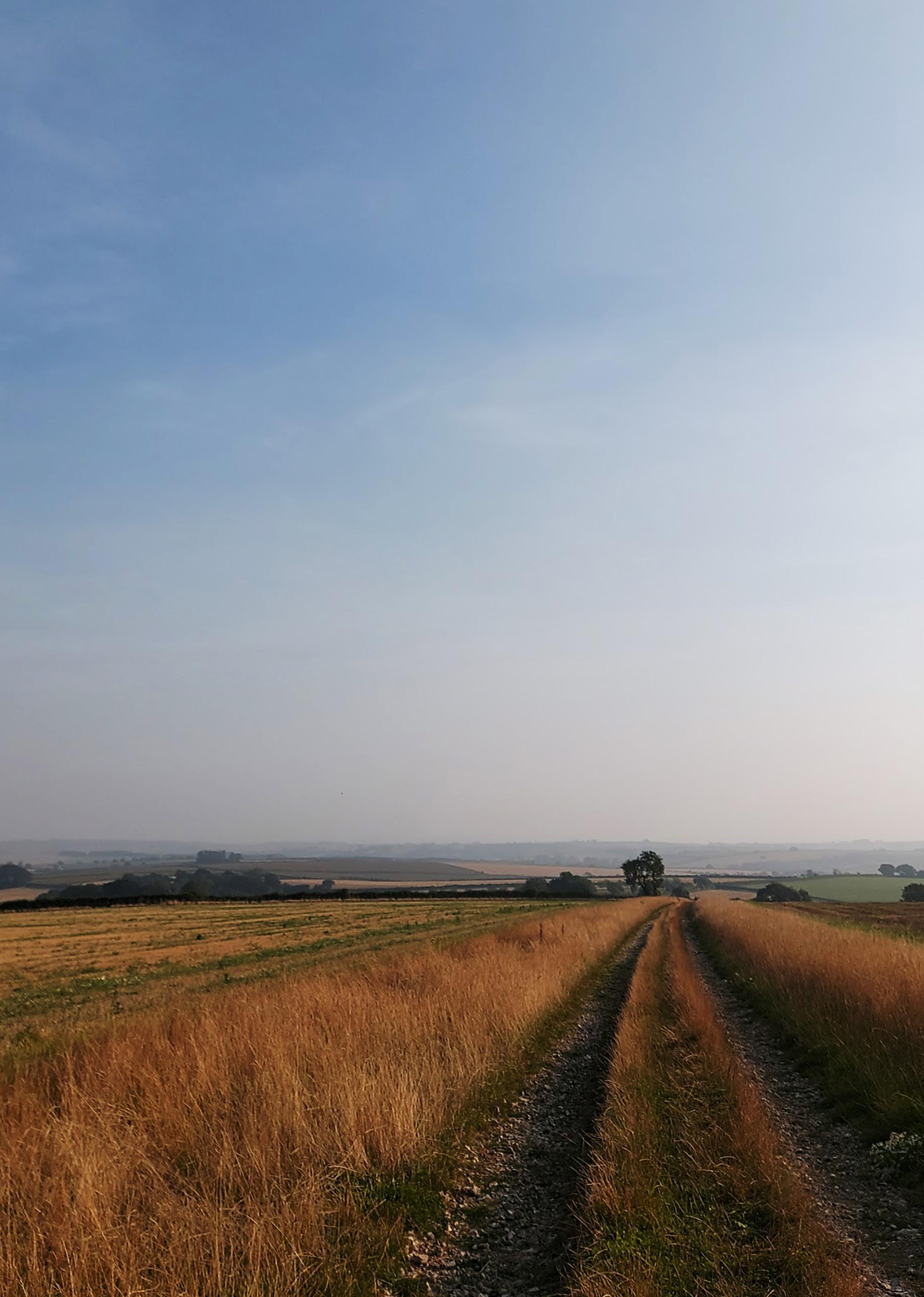
12 minute read
Take a Hike
9 miles
A fabulous walk taking in the very best of the amazing Lyscombe Hill horseshoe views. Wide, well-signed and easy-going tracks offering continuously far-reaching views. The second half is downhill all the way (without any stiff climbs in the first half!), and the whole three hour walk (actually 8.6 miles) is an absolute joy.
Take a Hike... The Piddletrenthide to Hog Hill circle
The routes we feature have always been created and walked recently by ourselves, so you know you can trust them - we aim for unpopulated routes with as little road and as many views as possible! You can always see the route and follow it yourself via the free Outdoor Active app - see all our routes here.
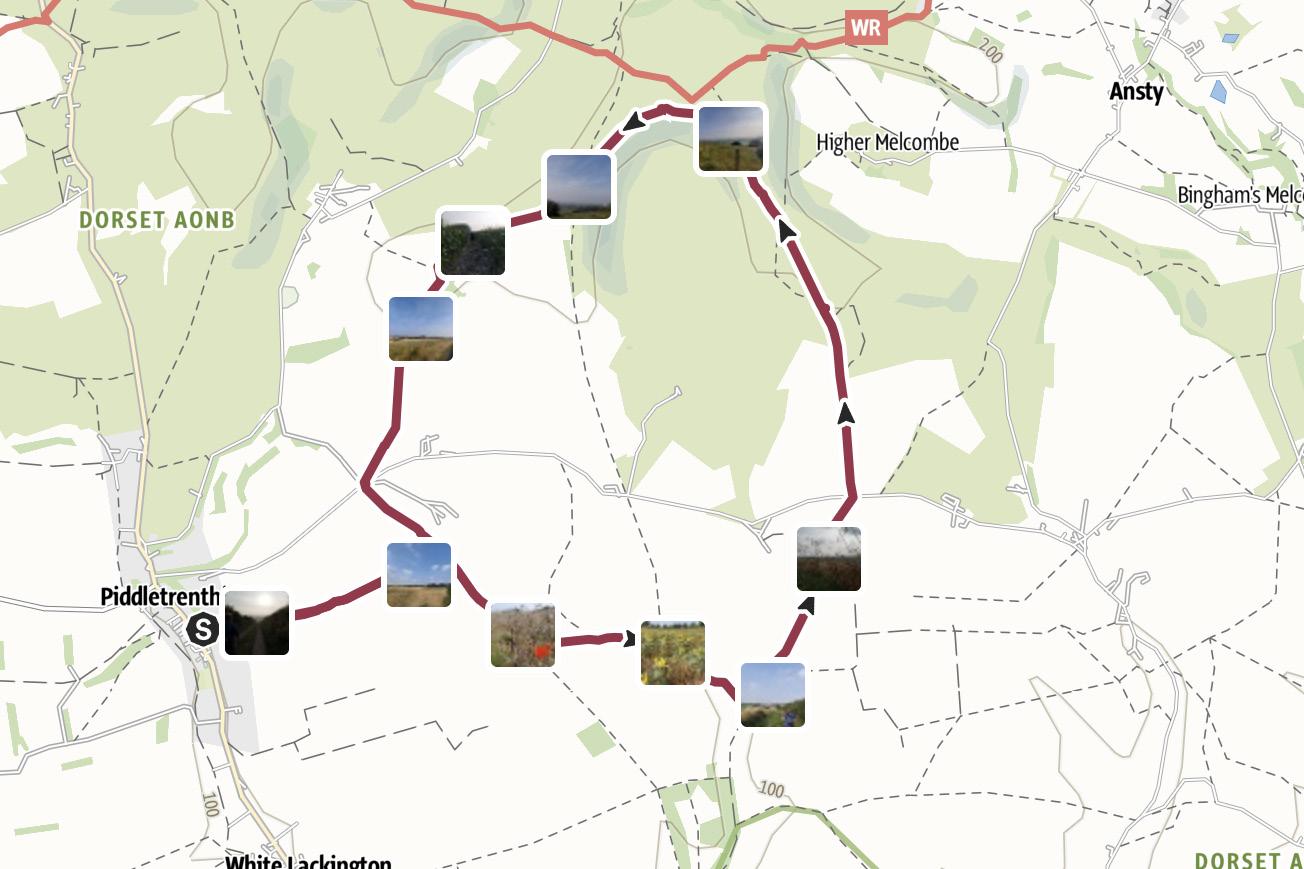
CLICK THE MAP TO SEE THE ROUTE ON OUTDOOR ACTIVE, OR SCAN THE QR
Oh I do love this view - the curve of Lyscombe Hill to the right, the cross dykes on Hog Hill to the left, and Lyscombe Bottom laid out below. NB - This is a TOP lunch spot!
Another view out across Lyscombe Bottom, this time from the ridge between Hog Hill and Lyscombe Hill. After the steady starting climb up from Piddletrenthide, the track immediately opens to the first of your big-sky wide views.
Does anyone else think the ragwort been spectacular this year?Do take a snack or lunch with you - almost the entire horseshoe-shaped ridge from the top of Hog’s Hill to the top of Plush Hill is one long, amazing, picnic spot.
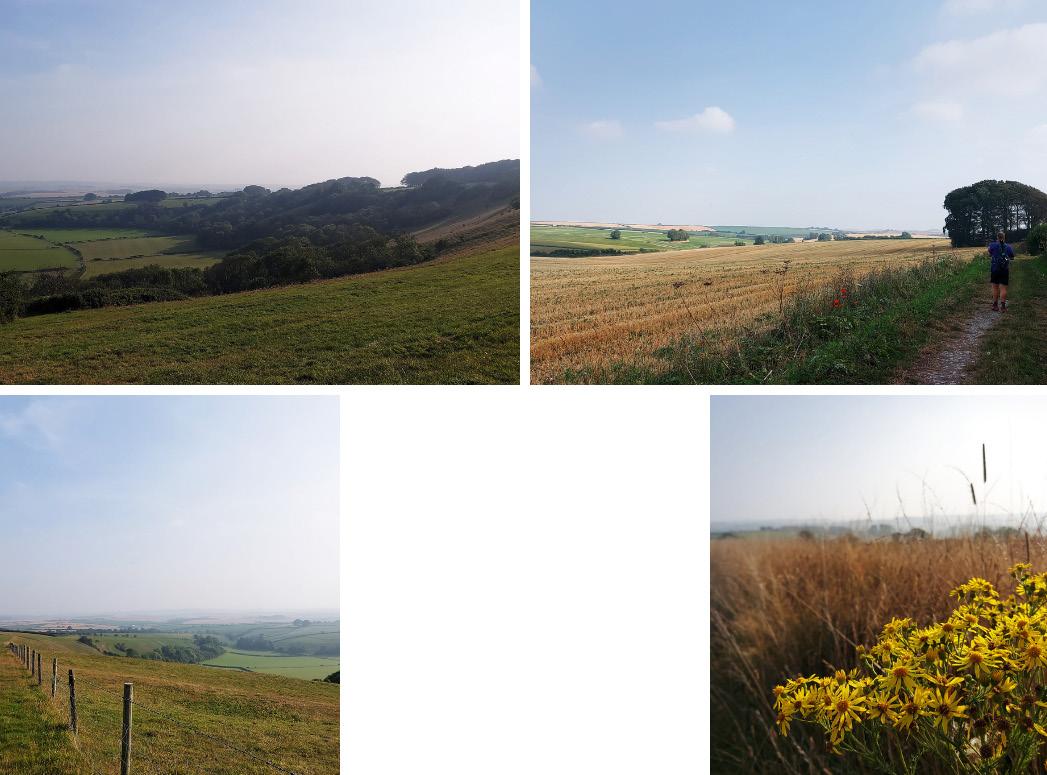
Parking is in Piddletrenthide itself - there’s usually plenty of space, but do be considerate to the villagers as you’re parking on the main street.
FLOWERS
How much bud? Are you feeling bouquet?
Charlotte Tombs, an experienced Dorset flower farmer at Northcombe Flowers in Sturminster Marshall, shares her growing year and seasonal thoughts with us.
Imported flowers, as we should all be aware by now, are not only costing the Earth they are also breaking the bank; the demand for cut flowers this year has never been so high
There are a number of factors that have caused this price rise: the first of which, believe it or not, is snow storms in Ecuador. This is where all the pretty garden roses are imported from (do people not realise that England is the home of the English garden rose?). But also Brexit and yes our new but powerful enemy, Covid-19 have had an effect. All these coupled with fact that it is becoming increasingly harder to employ people to pick and harvest flowers. Some roses in the fashionable antique muted tones at the moment are selling for £5 to £6 a stem - and that’s wholesale. Crazy prices, crazy time; with double the amount of

Charlotte suggests if you’re shocked at the cost of flowers for your wedding or event (or your home), then DIY flowers are the answer. Buy them by the bucket and arrange them yourself. No air miles, no pesticides, just British flowers at their best.
Buying locally grown flowers like Charlotte’s not only supports UK flower farmers, but also helps to reduce your carbon footprint - and puts a scented country garden straight into your vase.
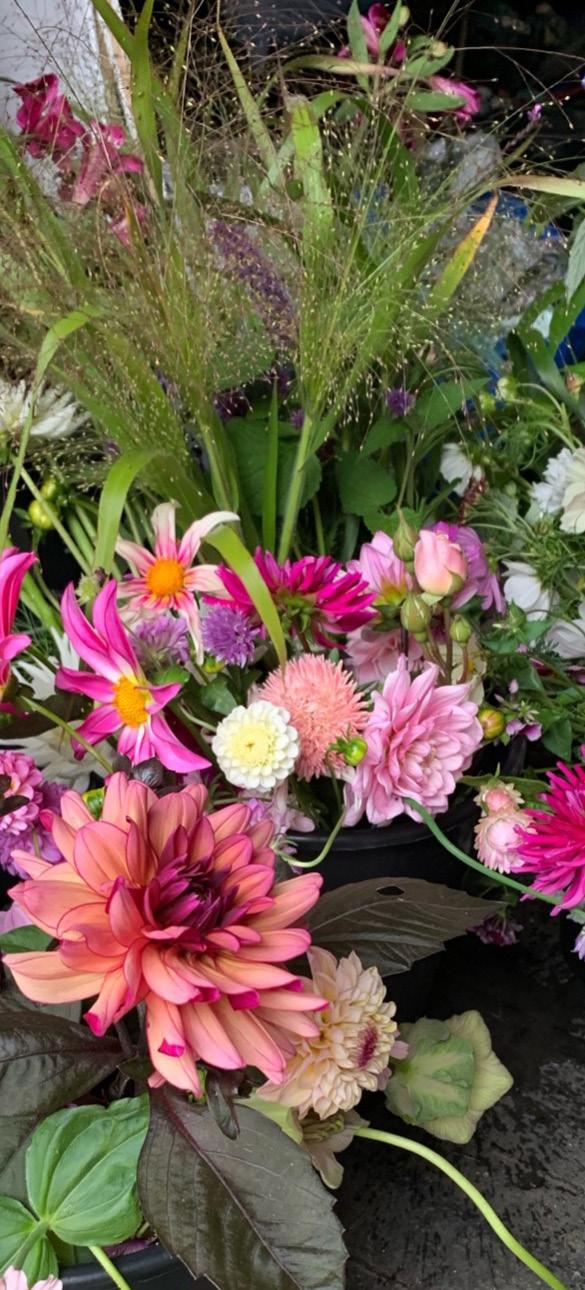
weddings taking place post-covid high demand will surely further inflate the prices. It’s not the individual growers, wholesalers or florists making huge amounts of money, either - everything has just got more expensive. You’ll notice even your regular groceries bill is increasing, almost weekly, it feels.
Flower auctions work very differently to a normal auction.
Where you would usually expect prices to start low and the bidding to move them slowly higher, the opposite is true for flower auctions. When that perfect coloured rose comes up for auction, and you have a customer, perhaps a bride who has stated that this particular shade will make or break her wedding, then the florist will quickly bid whatever it takes, for fear of missing out. Thus pushing prices up.
There are of course British flower and foliage growers
(why would I otherwise be writing this?). But the British flower industry needs to be supported, by the government and by the British public. Smaller growers need to join forces so we are able to “Some roses in supply the wedding the fashionable antique muted industry from within. Many are now hell bent on tones at the demanding to know moment are where their food selling for £5 to £6 a stem” comes from, and yet never think about the source of their flowers?
We can all make a start for ourselves.
Sow your hardy annuals such as cornflowers, calendula, ammi majus and poppies now, and you’ll be rewarded with earlier, stronger and healthier blooms. What is not to love? Plus the hungry pollinating insects will thank you next year after a long grey winter.
All the leaves are brown, and the sky is grey…

There’s something to be said about the chill of Autumn arriving around this time of year. Summer 2021 was a bit sporadic in terms of the warmth, but we weren’t short of heatwaves and lots of bright days.
Being able to reconnect with friends and family with the sun shining upon us brought smiles to our faces here at Thorngrove. Even with the adaptions we’re making to cope with life eventually moving past the pandemic, it does feel the most ‘normal’ things have been in a long time, and the arrival of a new season brings time for reflection on those things, but also, for looking ahead!
Here at Thorngrove, planting season is underway.
Nursery Manager Mark Hoskins has his hands full; “Autumn is probably my favourite time of year, both personally and work wise. I like the autumn colours of the leaves, and it means we get to do some proper nursery work, potting up all the bare root stock, the bare root roses are due in November, and the trees shortly afterwards. Right now we also have some nice trees and shrubs with autumn berries - including Pyracantha, Cotoneaster, Callicarpa, Symphoricarpos. Stop by Thorngrove to see if something takes your fancy and could have a new home in your garden”. The glasshouses team are also busy as we move into Autumn, taking scented geranium cuttings for next year, and snipping flower heads of agapanthus and drying them ready to sow the seeds.
students, with some new arrivals too, all settling in well and continuing to be a vital “...taking scented part of our team here. Their work geranium cuttings experience for next year, allows them and snipping to get involved in all aspects flower heads of of running the agapanthus” garden centre and café, so it’s great to see them all getting stuck in after the summer break. The new season may mean we’re saying goodbye to summer, but the freshness of Autumn is another new beginning, and we’re excited to continue planting and then look ahead as we start getting festive…yes, it’ll be here before you know it!
And so the year moves on.
September also saw the return of our Employ My Ability
Kelsi-Dean Buck Thorngrove Garden Centre
Callicarpa Cotoneaster Pyracantha

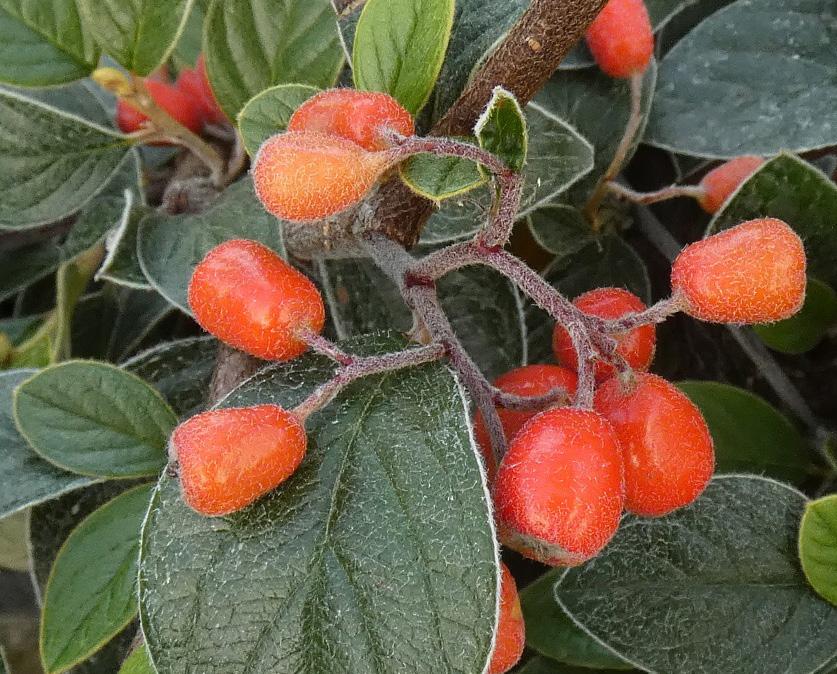
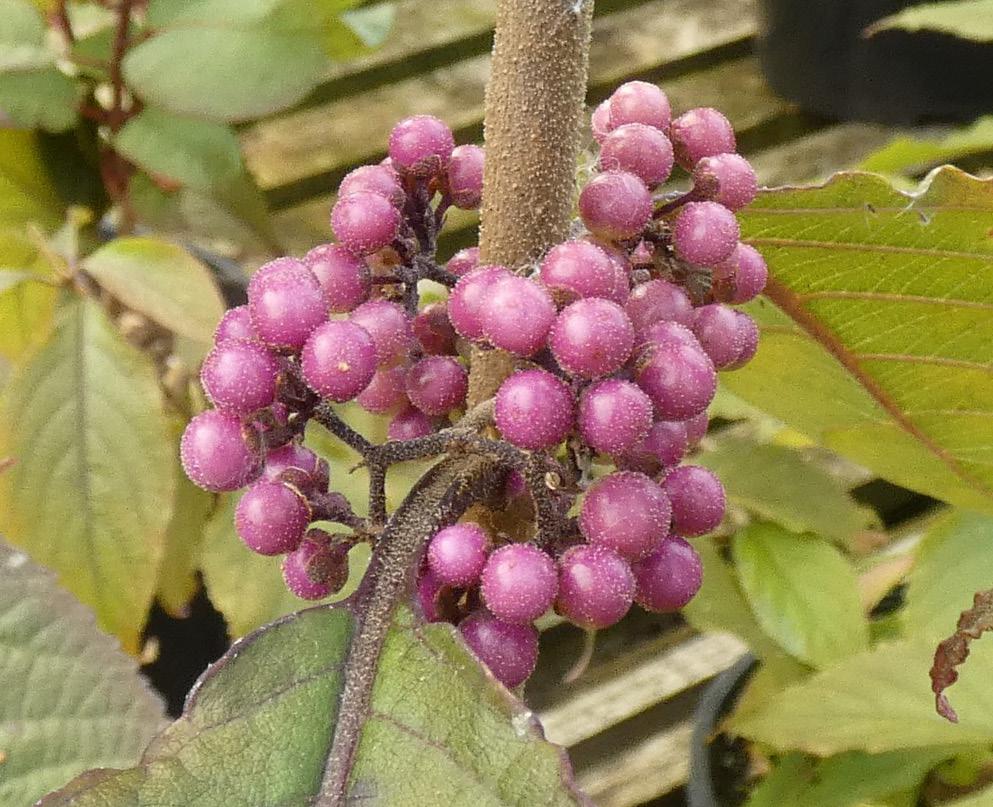
The comma butterfly gets its name from the only white marking on its underside, which resembles a comma. When resting with wings closed this butterfly has excellent camouflage, the jagged edges and cryptic colouring of the wings conceal hibernating adults amongst dead leaves. The larvae, flecked with brown and white markings, bear close resemblance to bird droppings.
The voice of the allotment
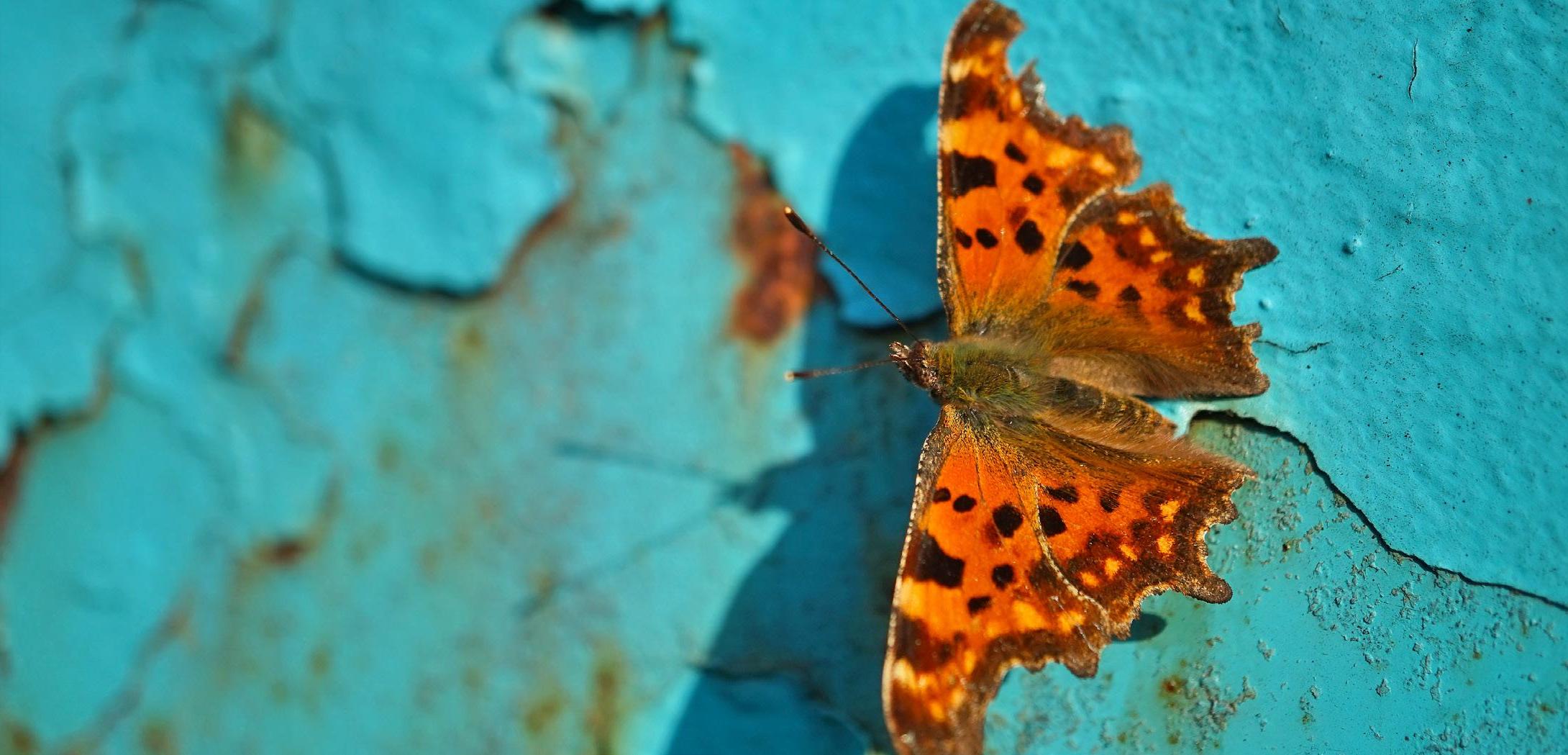
with Barry Cuff
Due to the lack of any substantial amounts of rain for many weeks (at the time of writing!), all the later plantings and sowings needed frequent watering during September.
These included leeks, Winter and Spring cauliflowers, Romanesco, Savoy cabbage and calabrese. Other crops needing water were the Witloof chicory, celeriac and celery. The celeriac was also mulched and fed with liquid seaweed. All the Autumn salad crops sown during late August and early September were watered every other day and put on good growth. We finished picking the Swift sweetcorn on the 23rd. From 45 plants of this early extra tender and sweet variety we harvested about 70 well filled cobs. Many of these were eaten with lashings of butter within a few hours of picking, the remainder ending up in the freezer. Carrots, beetroot, radish and lettuce were harvested as required. The plants from our last sowing of lettuce will be protected by cloches and will be ready in October.
Brassicas and cob nuts
The last Cheesy cauliflower was cut mid month, and next to harvest in October will be Fargo and Di Sicilia violetta with purple curds. Cendis will follow during November and December and then Medallion in February and March. We aim to have cauliflower available for about six months of the year - to achieve this we raise and grow five different varieties. Early planted Ironman calabrese is providing us with some good heads. Hopefully these plants will produce smaller side shoots over the next few weeks. The cob nut bushes in our hedge have given a heavy crop of large nuts. These bushes were planted about 25 years ago. Our raspberry canes have cropped over a two month period and at the moment the variety Joan J is doing exceptionally well.
In other news...
The sunny September days saw many butterflies on the plot attracted by Tithonia, sunflower and Cosmos. We have noted Comma, Peacock, Painted Lady and Small Tortoiseshell. Both Large White and Small White have been very active laying eggs on the Brassica plants. Their eggs and caterpillars are squashed before they can do too much damage. The plants are inspected daily as the caterpillar of the Small White is green and quite often lies along the midrib of the leaf making it difficult to spot. An interesting plant still flowering on the plot is Weasel’s snout (Misopates orontium), a miniature snapdragon with pink flowers (below). This is a fairly rare annual weed. Over the next few weeks we will be requesting catalogues from seed companies and ordering well rotted horse manure from a local farm.

Garden jobs for October
For an organic treatment, Neem Oil works well to suppress powdery mildew, black spot, and other rose diseases. As an added benefit, it also repels Japanese Beetles and keeps them from decimating your roses. For chemical control, the fungicides tebuconazole (Provanto Fungus Fighter Concentrate), tebuconazole with trifloxystrobin (Provanto Fungus Fighter Plus, Toprose Fungus Control & Protect), and triticonazole (Fungus Clear Ultra) are labelled for the control of rose black spot.
Autumn is the best time for planting trees and shrubs and hedge planting. The winter can be too cold and in autumn the soil is still warm and usually moist.

Autumn is officially here! We can look forward to the spectacular display of colours from our deciduous trees and shrubs.
Here are a few jobs for you this month:
• In general terms Autumn is the best time for planting trees and shrubs and hedge planting. The winter can be too cold and in autumn the soil is still warm and usually moist. • Cut back and divide herbaceous perennials, and protect half-hardy plants with leaf mould or compost if you are leaving them in the garden borders. Hardy fuchsias will definitely benefit from this. • Move tender plants (fuchsias, pelargoniums etc), into the greenhouse to overwinter. • The usual advice is to dig up dahlia tubers from the borders and overwinter them in dry compost in the shed or greenhouse. But with the milder winters we have nowadays, you may wish to take a chance and
just leave the tubers in the ground - especially if they are in a sheltered (warm) location in your garden. • Clear up your borders, remove annuals, and plant up for spring with wallflowers, pansies and perhaps Bellis Perennis daisies.
A little maintenance
If you have shade paint on your greenhouse glass, now is the time to remove it. When it is dry remove the paint carefully with a dry cloth. This will help let in more light and help grab as much of the sun’s heat in the cooler days Clean out the greenhouse or shed and prepare for the winter sowing. Clean and disinfect all pots, the staging and shelves plus the inside of the glass with a warm solution of Jeyes fluid to reduce pests and any fungal infection. Also use this time to clean up and maintain all garden tools and equipment.
Now’s the time to treat black spot on your roses.
Black spot is caused by the fungus Diplocarpon rose. The fungus develops in cool/damp/ humid situations, especially early in the year, so now is the time to try and prevent it. At first, roses appear to cope with black spot, but in a year or two they will become susceptible to other diseases. During the warmer months try to keep foliage as dry as possible; only water early in the day so the plant can dry before evening. Keep rose beds and plants clear of fallen rose leaves if black spot is a problem. Do not compost the leaves if they have the fungal black spot on them. One effective treatment is a fungal spray to control overwintering spores and the rose will need to be sprayed again in the early growing season. There are organic methods which include sulphur, and Neem oil which are available as sprays or dusting powders.











